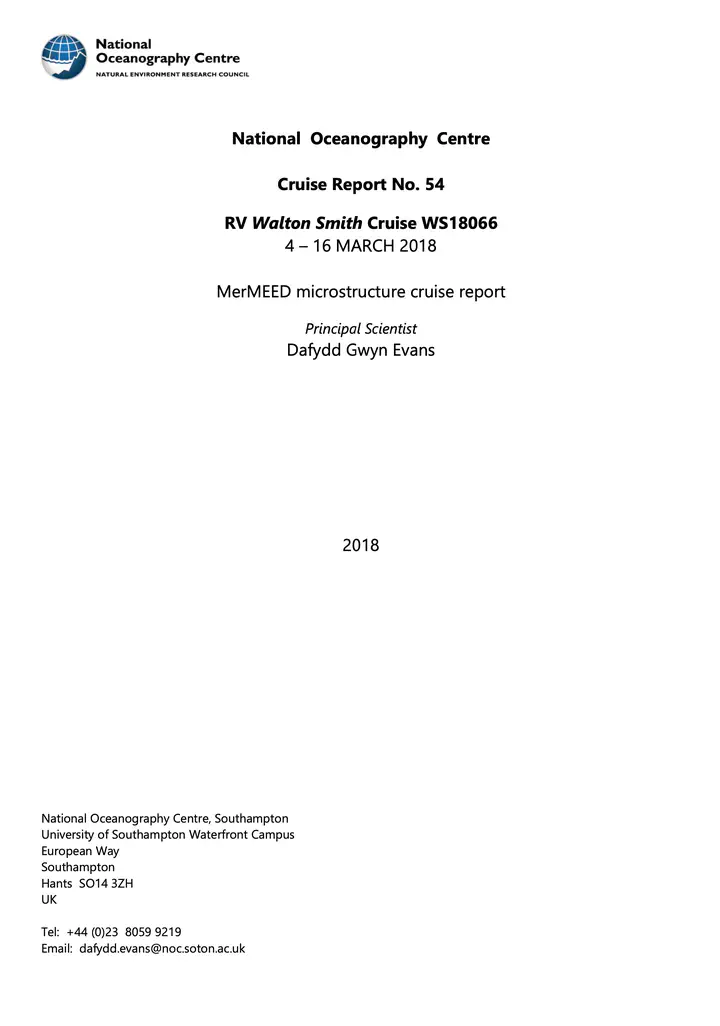Cruise Report: RV Walton Smith Cruise WS18066 4 – 16 March 2018, MerMEED microstructure cruise report.

Abstract
The MerMEED (Mechanisms responsible for Mesoscale Eddy Energy Dissipation) project is a NERC funded project (NE/N001745/1) to investigate the levels of dissipation associated with eddies at a western boundary, in order to identify the mechanisms responsible. Mesoscale eddies are ubiquitous in the worlds oceans, and can be found in the subtropical Atlantic travelling slowly westward (at 4–5 cm/s), with a radius of about 100 km. These eddies are formed through baroclinic instability or wind forcing across the Atlantic, but when they reach the western boundary (east coast of the USA), they disappear from the satellite altimetry record. This disappearance of eddies occurs throughout the worlds oceans at western boundaries, but from altimetry alone, it is not known whether they disappear because energy is transferred to other wave modes or the mean flow, or whether it is locally dissipated through eddy-topography interactions. This is the third cruise of the MerMEED project. The purpose of this cruise was to (1) make microstructure temperature and shear measurements in order to measure dissipation at the intersection of an anticyclonic eddy and the steep topography to the east of Abaco, Bahamas, and (2) deploy standard Seagliders. Of these, the standard Seagliders were intended to remain in the area for 4 months. During the 9 day cruise, 46 profiles of microstructure data were collected using a tethered microstructure profiler, and a shipboard 75 kHz ADCP collected concurrent measurements of ocean currents. This cruise is the third cruise for the MerMEED project, and the data collected are intended to complement additional field operations, including moored instruments added to the RAPID array (thermistors and ADCPs on the WB1 mooring).